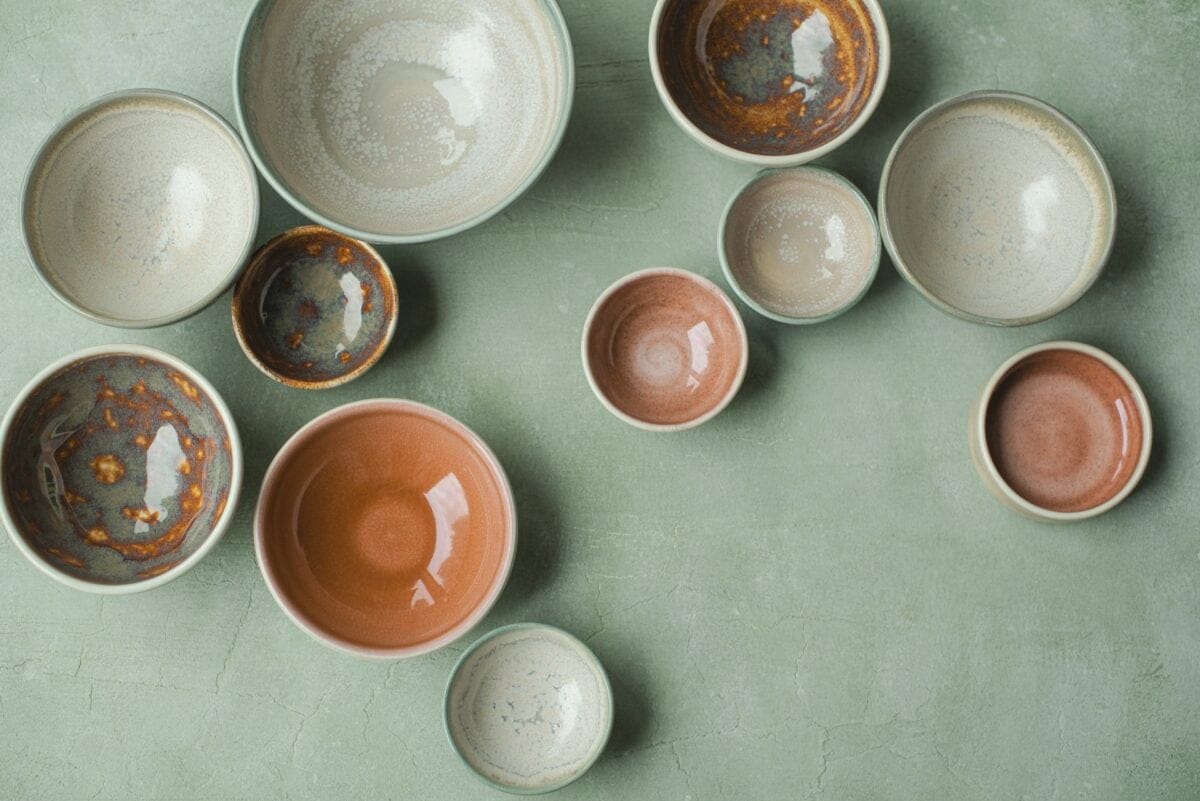When searching for the most valuable pieces, professionals and amateurs alike search for antique pottery marks that help identify where and when a piece was made. While there are numerous pottery marks out there, some of them hold immense value. So, if you’re out at a garage sale or antique shop looking for the newest addition to your collection, check out these six antique pottery marks that could hold value.
6. Coalport Porcelain Company
Starting our list of antique pottery marks is the Coalport Porcelain Company. The English company was founded at the end of the 18th century and is known for its beautiful pieces. The most valuable pieces to search for are the ones made in 1881. As for pottery marks, there are several to look for, including the word “Coalbrookdale” for older pieces or an image of a crown for later pieces.
RELATED: 12 Vintage Pottery Brands You May Not Remember
5. Delft Blue Pottery
Fifth on our list of antique pottery marks is Delft Blue pottery. While it may be amongst the most valuable, Delft is also one of the trickiest to identify. “Delft” refers to a type of pottery rather than a brand, created in the Netherlands in the 1650s by combining European and Asian cultures. Known for its iconic blue and white color scheme, the pottery marks you need to look out for are an image of a jar or the initials “JT” with the word “Delft.”
4. Moorcroft Pottery
Next on our list of antique pottery marks is Moorcraft Pottery. The English company is still in business, but the most valuable pieces come from when the company began in 1897. Moorcraft’s pieces are known for their botanical designs and bright glazes. In terms of pottery marks, look for the word “Moorcroft” or “W.M.,” as well as a factory mark and pattern number.
CHECK OUT: 6 Vintage Dishes Worth Money Today
3. Meissen’s Crossed Swords
Rounding out the top three antique pottery marks is Meissen’s Crossed Swords. Meissen is a German porcelain company that began in 1710, but its famous crossed swords mark wasn’t used until the 1720s. The key when finding the right crossed swords is looking for a dot or star between the tips of the crossed swords. Collectors can also tell the age based on the color. If the piece is a smokier white, it was most likely made before 1720, while a brighter white signals the end of the 1720s.
ALSO READ: 6 Valuable Coffee Mugs and Teacups That Are Worth Collecting
2. Wedgwood’s Iconic “W”
Second on our list of antique pottery marks is Wedgwood’s iconic “W.” A huge company in the porcelain world, Wedgwood’s founder, Josiah Wedgwood, is often referred to as the “Father of English Potters.” To identify the pottery mark, look for the words “Wedgwood” or “Wedgwood & Bently.” There could also be the initials “W & B” on the underside. Wedgwood’s pottery features traditional motifs and a signature blue glaze.
1. Chinese Reign Marks
Last but not least on our antique pottery marks list is Chinese reign marks. For those collectors searching for the oldest marks, Chinese ceramics are the perfect place to look. The delicate antique pieces often tell a story in every hand-painted stroke of glaze. Instead of a maker’s mark, older Chinese pottery will have a reign mark that denotes the dynasty the piece was made. Since these symbols are often faked, it’s crucial to seek a second opinion before purchasing.
READ NEXT: 5 Strangest Limited-Edition Collectibles Ever Released
